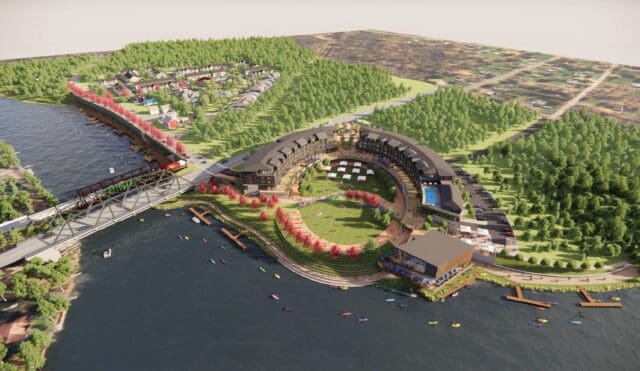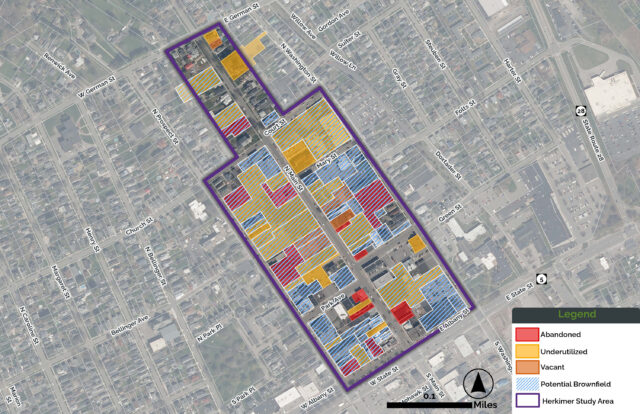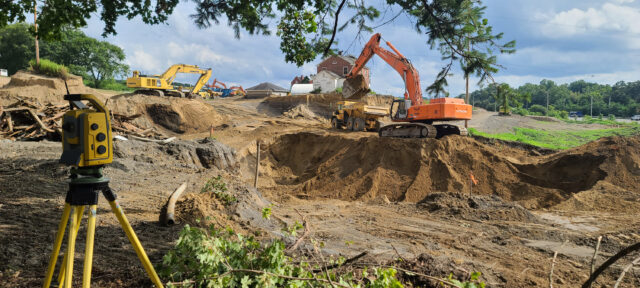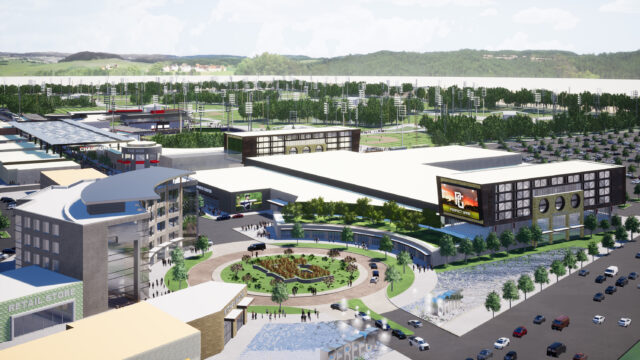LaBella Associates conducted a large-scale due diligence project that included a detailed Phase I Environmental Site Assessment (ESA) and significant Phase II ESA at the former Emerson Power Transmission (EPT) facility in Ithaca, New York.
Site History
The site, a 94-acre parcel including 800,000 sq. ft. of buildings, was utilized for heavy industrial purposes for more than 100 years. The past owners used trichloroethene (TCE) – a volatile, human-made chemical – and investigations in the 1980s revealed significant groundwater contamination in a complicated bedrock fracture network. The site is listed as a Class 2 New York State Inactive Hazardous Waste Disposal Site. and documented impacts are currently undergoing remediation and will be for another 30+ years.
A significant chlorinated solvent plume emanating from a fire-water reservoir structure was identified at the site in the 1980s. Unfortunately, contamination extended off-site, impacting residential properties downgradient. Since then, there have been significant efforts to mitigate off-site impacts and remediate the firewater reservoir source area.
Due Diligence Efforts
LaBella was selected to evaluate this large and extremely complicated facility as part of a due diligence assessment for a real estate transaction. The purchaser is interested in redeveloping this vacant facility into a light industrial, commercial, and residential “live-work-play play” neighborhood.
This ambitious development plan and significant potential for subsurface impacts warranted a large-scale and detailed subsurface investigation to identify potential data gaps in historical investigations and remediation. Prior to initiating a detailed subsurface investigation, our team completed an extensive historical review of the facility to target potential areas of concern.
Following the extensive record review, suspect areas of concerns were identified, and a substantial subsurface investigation was completed throughout the property. The investigation included soil gas surveys; geophysical surveys; soil borings; test pitting; bedrock well installations; and sediment, soil, and groundwater sampling. We also completed a preliminary sewer evaluation and evaluated building components for hazardous materials (e.g., asbestos, lead paint, etc.).
LaBella completed this expansive investigation to identify baseline conditions for the purchaser and seller to negotiate the real estate transaction and allow this vacant and defunct property to be rehabilitated. Based on the results of our extensive record review, the identification of several data gaps, and the subsequent subsurface investigation, multiple, previously unidentified areas of impact were identified.
Our team has supported the purchaser through ongoing contract negotiations and regulatory discussions associated with this contamination. This work has included development of opinions of probable cost for remediation. Numerous areas of impact are currently being remediated by the previously identified responsible party and redevelopment of the site is anticipated to commence in 2022 or 2023.














